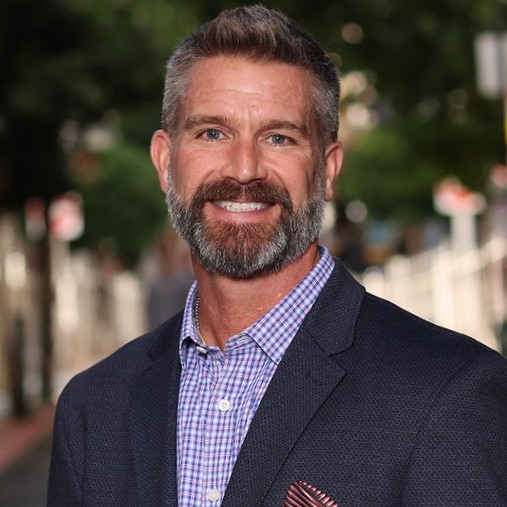Complex Claims
When Insurers Say No

After 23 years managing risk at a company with a product line that includes respirators that protect workers from toxins created during sandblasting, Roger Andrews has learned a thing or two about complex claims.
As director of risk management for personal protective equipment maker E.D. Bullard Co., Andrews has handled thousands of lawsuits over the years, including those stemming from occupational disease claims in which plaintiffs have sought damages for asbestosis and silicosis — diseases that may be contracted 10 to 15 years or more before any symptoms or actual claims arise.
Some cases have emerged because workers used Bullard’s safety gear sporadically or not at all.
Whatever the merits of the underlying cases, it’s no surprise that historically such lawsuits have led insurers to balk at supplying policyholders with indemnification or defense. Clearly, the long-tail nature of occupational disease claims has led to disputes over items including applicable coverage triggers, policy duration, and sufficient notifications (or the lack thereof).
Nevertheless, Andrews said it is rare now that he faces conflicts with insurers, and that is largely due to ongoing relationship-building efforts to ensure he and his underwriters and claims adjusters are on the same page.
Andrews has worked with some carriers for 18 years. “It still makes sense to meet with them regularly once a year, usually in August just prior to our October renewals,” Andrews said, “just to get a feel for the marketplace, any rate increases, and what the situation is if we encountered any unique risks.
“It may be that we haven’t seen any claims or that we’ve seen lots of claims, and we’d talk through that.”
Working to solidify insurer relationships won’t always do the trick, of course. Most experts agree that insurance challenges continue to become more complex across commercial property as well as liability lines.
Industry attorney Ty Childress, a partner and head of the insurance recovery group at Jones Day in Los Angeles, said there are numerous cases where insurers are apt to deny claims — particularly when the stakes are high and large dollar amounts are at issue.
Such claims include “asbestos and environmental exposures covering multiple policy years,” he said.
Nor are the problems confined to liability insurance, Childress said, noting that the nature of business interruption can also make claims valuation difficult and subject to differing views from legal and insurance experts.
So, what are risk managers to do? Attorneys, brokers and other risk experts have several recommendations for insureds hoping to avoid insurer litigation or failing that, manage such cases more deftly.
One basic step risk managers should take is, prior to policy issuance or during annual meetings with underwriters, make sure any attorney you plan to use is on your insurers’ approved list in case litigation arises, Andrews said.
“One good rule of thumb is to anticipate that litigation will arise under most policies,” said Andrews.
“Not having your preferred attorney or law firm on the insurer’s ‘panel counsel’ list is a source of litigation in and of itself and can really prejudice the effective management of the litigation,” he said.
In addition to tightening the connection with insurers, risk managers should also ask to select the independent adjuster who will work on their account, said John Dempsey, managing director and practice leader, claims preparation, advocacy and valuations at Aon Global Risk Consulting.
Business Interruption Disconnect
Dempsey said there have been some real changes occurring in the property-catastrophe sector of late, in terms of how business interruption (BI) risks are interpreted.
For example, when a law firm noticed its billable hours fell following Superstorm Sandy and tried to collect under its BI policy, the lead insurer on the program interpreted the coverage clause in a somewhat novel way.
“The insurer said, ‘Let’s look at each lawyer [at the firm] and whether the reduced billings were the result of physical damage to the law firm’s property, or other causes such as trees blocking their driveways, gas shortages, or time spent repairing their damaged houses,’ ” Dempsey said.
“Not having your preferred attorney or law firm on the insurer’s ‘panel counsel’ list is a source of litigation in and of itself and can really prejudice the effective management of the litigation.”— Roger Andrews, director of risk management, E.D. Bullard Co.
“If other ‘causes’ were found, the business income claim was reduced, accordingly. Yet, all of these causes were inextricably linked to Sandy and its effects. There’s a disconnect here,” he said.
Clearly, that storm helped to illustrate that insurance products have not kept up with the changing risks companies are facing, he said.
For one thing, because coastal flooding caused significant damage, it was important to know whether that peril was classified as “flood” or “storm surge” under the policy. In some cases, insureds without adequate flood coverage were out of luck, he said.
Furthermore, whereas many businesses did not suffer direct property damage, which is generally required for the recovery of business interruption losses, the wider effects of Sandy meant that thousands of employees had trouble getting to work due to infrastructure damage in the storm’s aftermath.
Others suffered losses because financial institutions closed down for two days.
The result: Although many businesses sustained Sandy-related financial losses, without direct physical damage to trigger coverage, many insureds found they lacked protection under their property BI policies.
That has led some underwriters to urge risk managers to lower their claim recovery expectations.
“They do not wish to insure all of the things that could go wrong following a natural catastrophe like Superstorm Sandy or a terrorist event like 9/11,” Dempsey said.
Insurance company claims adjusters have pointed to the broader economic impact of large-scale events such as Sandy or 9/11 and theorized that certain losses would have been incurred even if a business did not take a direct hit.
This came as a shock to businesses that thought their policy covered all BI losses stemming from Sandy.
And, in fact, this theory — put forth by insurers and insurance adjusters — often has no basis in the policy wording, Dempsey said.
To minimize surprises going forward, Dempsey generally recommends that his clients have a role in selecting the independent adjuster and other insurance company experts working on their account.
“That may sound unusual,” he said. “But so much of the claims process comes down to personal relationships,” he said.
“Knowing the adjuster and the other experts, and being able to come to a meeting of the minds in terms of objectives and working through problems will pay huge dividends,” he said.
Best Practices
Here are some tips for dealing with complex claims litigation involving insurers:
- Timing issues often create conflicts
One problem that can frustrate risk managers is claims-made liability coverage, which requires policyholders to give notice of circumstances that may give rise to a claim in the future, said attorney Mark Garbowski, a shareholder at Anderson Kill.
“That’s caused disagreements as to whether a new claim related back to an earlier claim or circumstance, and as to which tower of policies it went into,” said Garbowski, whose practice concentrates on insurance recovery on behalf of policyholders, with particular emphasis on professional liability coverages.
He advises insureds with claims-made coverage to expand their notification to insurers about potential claims.
“You might have a claim that comes in today and that relates back to a notice of circumstances two years ago. In that case, I suggest you give notice to policies in effect today as well as those in force two years ago,” he said.
- Know state law
Frequently, when liability cases emerge, the third-party plaintiff will demand to see all communications between the insured and its underwriters. It is of paramount importance to know the law in your state, said Childress.
“Policyholders need to be wary of whether or not their communications with their insurers may be revealed to the underlying plaintiff,” he said. The answer may depend upon whether the insurer is a primary or defending insurer.
- Review coverage extensions and exclusions annually
“When meeting with underwriters — something that should take place once a year at least — risk managers should discuss coverage extensions or exclusions that may be or should be on the policy and that could be of particular concern,” said Andrews of E.D. Bullard.
“A lot of the time, litigation arises because the risk manager thinks there’s coverage and the claims person says no, there’s this or that exclusion,” he said. “You want to know [in advance] what conditions might be imposed on the policy.”
- Understand Your Cyber Liability Coverage
As cyber liability becomes a growing area of concern, risk managers need to be increasingly careful about what they’re buying.
“In the case of data breach, you’ve got to notify every single person that’s been affected,” Andrews said, and the costs can be monumental. If you want indemnification for such expenses, make sure whatever program you choose includes breach mitigation coverage.











